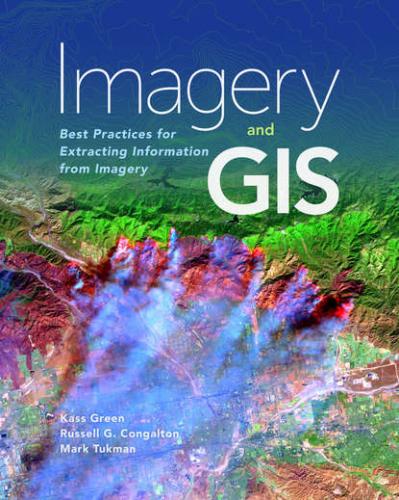Millions of images have been taken of the earth, but not all of them are accessible. Current reconnaissance imagery is not shared broadly, and many archives of imagery exist but are not easily searchable. Actually obtaining imagery can be problematic because there currently is no coordinated repository for imagery metadata. Some datasets such as NAIP and Landsat are easily searchable on the web, downloadable, and dynamically served. Others, such as imagery in private photogrammetry company archives, are usually searchable and accessible only by contacting personnel at the firm.
What is the project budget?
Ultimately, the project budget will limit the maximum expenditure on imagery and budgets often force trade-offs in project requirements. In the United States, multiple spatial and temporal resolutions are abundant and accessible at no charge (e.g., NAIP, Landsat, or imagery acquisitions funded by local agencies). More costly new or higher-spatial-resolution imagery can be acquired from commercial airborne and satellite operators. Outside of the United States, moderate-spatial-resolution imagery (e.g., Landsat and Sentinel) is freely available, but high-resolution imagery usually is either restricted by government programs or is sold by commercial companies under a license agreement.
Summary
We cannot emphasize enough how your choice of imagery will be dependent upon the requirements of your projects and not on the newest technology available. Different applications and organizations will have different requirements. A project to map impervious surfaces will have requirements different from one for property assessments, environmental monitoring, parcel mapping, weather prediction, road design, pipeline monitoring, forest inventory, change detection, soils, or geology. The imagery needs of a federal agency will likely be very different from those of a local or state agency, nongovernment organization (NGO), or private landowner. However, often one dataset can meet multiple organizations’ needs. Such is the case with the lidar and optical imagery acquired for Sonoma County, California, which is continually used by multiple organizations including NASA and USGS researchers, the Sonoma County Open Space and Agricultural Preservation District, Sonoma County Permit and Resource Management Department, Sonoma Ecology Center, Sonoma County Water Agency, San Francisco Estuary Institute, and many private companies (Green, 2017). It is essential that you carefully evaluate your and your partner organization’s proposed imagery uses before you purchase or acquire imagery. Considering the questions posed in this chapter forces imagery users to fully analyze and understand the benefits and costs of their imagery requirements, allowing them to make fully informed trade-offs when necessary.
Imagery Sources
Overview
Sources of imagery are globally distributed, highly varied, and often confusing and challenging to navigate or understand. This section reviews the major sources of both archival imagery and new imagery collects. The following sections provide more detailed information about imagery sources, organized by spectral resolution.
In general, the major civilian sources of imagery for analysis or visualization are either public agencies or private companies from whom imagery is both served and can be downloaded. There are many sources of imagery worldwide. The following list of airborne and satellite sources is not exhaustive but includes the most prominent sources. Table 4.1 summarizes and compares the sources by spatial resolution, spectral resolution, and availability. For comprehensive information about earth observing satellites, three websites offer up-to-date and detailed information:
http://database.eohandbook.com/. The Committee on Earth Observation Satellites Earth Observation (EO) Handbook and Database provides a detailed database on all civilian government earth observing satellites, past and present, which is searchable by agency, missions, and instruments.
https://directory.eoportal.org/web/eoportal/home. The European Space Agency’s (ESA) EO Portal provides a directory of past and planned satellite nonclassified missions from 1959 to 2020, categorized by space agency and from A to Z. It also includes a directory of 40 government scientific airborne flight campaigns.
http://space.skyrocket.de/. Known as Gunter’s Space Page, the website has information about all civilian satellites in orbit, not just earth observing satellites, and is searchable by nation and type.
ArcGIS Online
ArcGIS Online (https://www.arcgis.com/home/index.html) serves a huge array of imagery datasets for visualization with some imagery also dynamically served across the web and available for analysis. ArcGIS Online is perhaps the most comprehensive and best-organized source for cached worldwide imagery served online. Hundreds of datasets are available for most of the world that include a rich variety of imagery types from high-spatial-resolution, true color world imagery collected by commercial companies, to low-spatial-resolution weather data from NOAA, to images of global ozone and precipitation from NASA. Esri also dynamically serves the pixel values of several sources of imagery including NAIP and Landsat 8.
Table 4.1. Comparison of the major sources of imagery
Commercial Photogrammetry and Remote Sensing Firms
Commercial Photogrammetry and remote sensing firms operate aircraft in countries with open access to airspace such as Canada, the United States, Australia, South Africa, and many of the countries of Europe and South America. In fact, most of the imagery collected over those areas is acquired by private commercial firms who primarily collect mono and stereo, oblique and nadir, and passive and active very-high and high-spatial-resolution imagery from airplanes, helicopters, vehicles, and UASs. The firms primarily acquire imagery on an as-needed basis with the specifications of the collect determined by the image purchasers who are either private firms, public agencies, or NGOs. However, some companies collect imagery speculatively and then license access to the imagery to their customers. Links to information about and websites for many commercial photogrammetry and remote sensing firms can be found on the following websites:
Management Association of Private Photogrammetric Surveyors (http://www.mapps.org/search/custom.asp?id=196)
American Society of Photogrammetry Remote Sensing (ASPRS) (http://www.asprs.org/)
International Society for Photogrammetry and Remote Sensing (http://www.isprs.org/)
Commercial Satellite Companies
Commercial satellite companies offer imagery collected worldwide. These firms collect passive, multispectral, very-high, and high-resolution imagery. The Satellite Imaging Corporation’s website has a listing and summary of many, but not all, of the types of commercial satellite imagery available (http://www.satimagingcorp.com/satellite-sensors).
Government Agencies
Government agencies including local, state, federal, and international agencies make imagery available. The primary United States government sources
